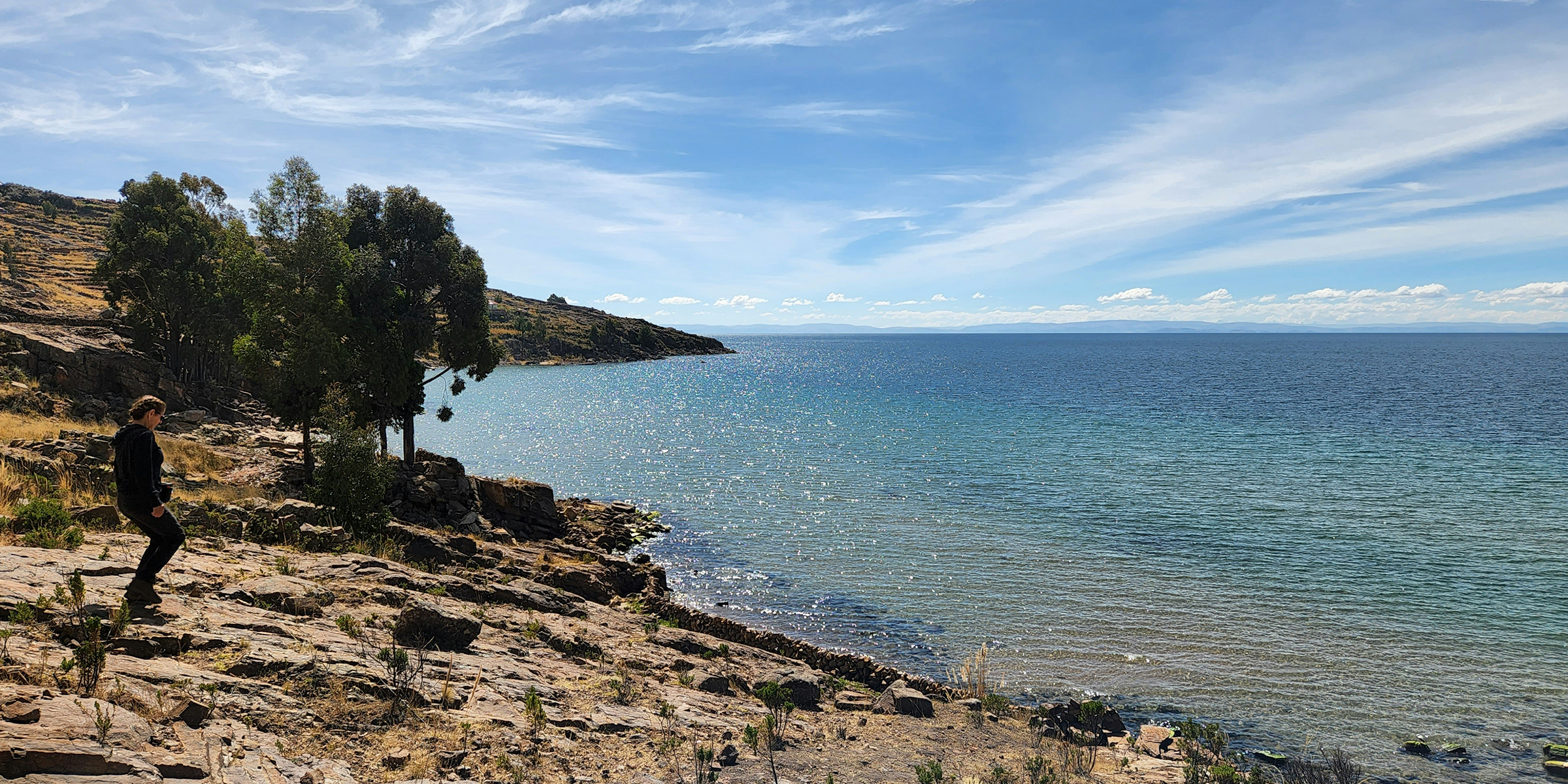GEOGRAPHY
Geological Features
Lake Titicaca is no ordinary lake. Sitting at 12,500 feet (3,810 meters) above sea level, it holds the title of the highest navigable lake in the world. Spanning over 8,300 square kilometers (3,200 square miles), it stretches across two countries—Peru and Bolivia—with about 60% of the lake in Peru and the rest in Bolivia.
A High-Altitude Wonder
Lake Titicaca is located in the Andes Mountains, making it one of the most breathtaking natural landscapes in South America. The air here is thin due to the high altitude, which means visitors may need time to adjust.
The lake’s deep blue waters reflect the surrounding snow-capped peaks, creating stunning scenery that feels almost surreal.
- The lake reaches a maximum depth of around 280 meters (920 feet), though most areas are much shallower.
- It’s primarily fed by rainwater and five major rivers, including the Ramis and Coata. Despite its large size, it has no significant outflow—most of its water is lost through evaporation due to the dry climate.
Floating Reeds and Islands
One of the most fascinating geological features of Lake Titicaca is the totora reeds, which grow along its shores. These reeds are not only a vital part of the ecosystem but also the material used by the Uros people to build their famous floating islands.
These islands are essentially man-made, created by layering cut reeds on top of each other to form a stable surface.
Tectonic Origins
Lake Titicaca was formed by tectonic activity millions of years ago. It sits in a graben, a geological depression caused by shifting fault lines. Over time, glacial melt and rainfall filled this depression, creating the massive body of water seen today.
Unique Climate and Weather
Despite its altitude, the lake helps regulate temperatures in the surrounding region, keeping the climate warmer during the day and colder at night.
Daytime temperatures can reach 60°F (16°C), but nights drop to near freezing.
The lake’s high evaporation rate contributes to cloud formations, often leading to dramatic sunrises and sunsets.
Lake Titicaca’s geography and geology make it more than just a pretty lake—it’s a living, breathing natural wonder that has shaped the people and cultures around it for thousands of years.

Unique Climate and Weather Patterns
Lake Titicaca has a microclimate that sets it apart from the rest of the Andean highlands. Thanks to its massive volume of water, the lake acts as a natural temperature regulator, preventing extreme temperature swings that are common at such high elevations. This makes the surrounding areas more livable and allows for agriculture that wouldn’t typically thrive at this altitude.
Seasonal Variations
The lake has two main seasons—dry season (May to October) and rainy season (November to April). Each season offers a different experience for visitors.
Dry Season (May to October):
- Average daytime temperatures range from 15°C to 20°C (59°F to 68°F)
- Night temperatures can drop dramatically, often falling below freezing
- Clear blue skies with intense sunshine due to the thin atmosphere at high altitude
- Very little rainfall, with most days remaining dry
- Higher visibility for viewing distant mountain ranges
- Stronger winds, especially in August, creating choppier lake conditions
This is the best time for outdoor activities, including island visits, hiking, and photography. However, nights can be extremely cold, so packing warm layers is essential.
Rainy Season (November to April):
- Slightly warmer with daytime temperatures averaging 17°C to 22°C (63°F to 72°F)
- Milder nights with temperatures typically staying above freezing
- Afternoon rain showers are common, with January and February being the wettest months
- Morning activities are usually rain-free, with clouds and precipitation building in the afternoon
- Lusher landscape with greener surroundings
- Calmer waters making for smoother boat journeys to the islands
This season is ideal for those who prefer fewer crowds, greener landscapes, and gentler lake conditions. However, you’ll need to plan activities for the mornings to avoid afternoon rain.
The “Lake Effect” on Agriculture
One of Lake Titicaca’s unique climate features is how it influences farming. The water stores heat during the day and slowly releases it at night, creating a warmer microclimate along the shores.
This allows local farmers to grow crops like potatoes, quinoa, and corn, which typically wouldn’t survive at such a high altitude. Many of the lakeside slopes feature ancient agricultural terraces, a farming method passed down through generations.
The lake’s stable climate has played a crucial role in sustaining human life in this region for centuries, making it not just a natural wonder but a vital resource for the people who call it home.

